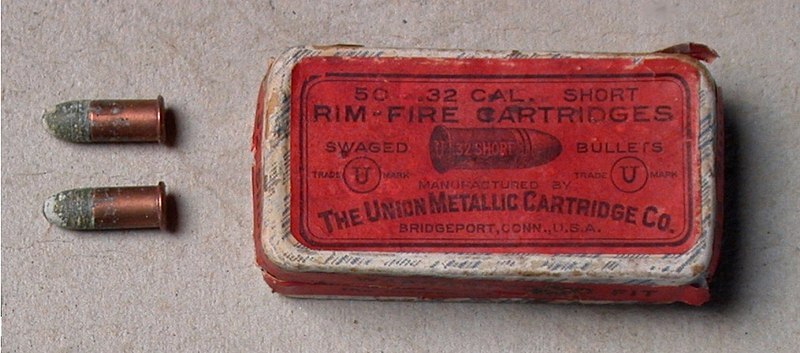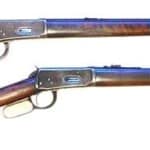
The .32 Rimfire Cartridge Family: A Comprehensive Guide
The .32 rimfire cartridge family holds a unique place in firearms history. Once a popular choice for small-game hunting, target shooting, and even self-defense, these rimfire rounds are no longer commonly produced. However, for collectors and enthusiasts of historical firearms, understanding the .32 rimfire's legacy is essential.
History and Development of the .32 Rimfire
The .32 rimfire cartridge was first introduced in the mid-19th century as a natural progression from earlier rimfire designs. It became widely popular due to its versatility and ease of use, particularly for civilian shooters who needed a reliable yet relatively low-powered round. Manufactured primarily in the United States, the .32 rimfire was produced in multiple variations, each designed to cater to different firearms and shooting applications.
While initially developed for revolvers and single-shot rifles, the .32 rimfire saw expanded use in small-game hunting, target practice, and even as a defensive round in compact handguns. Its affordability and effectiveness made it a household staple for many gun owners of the time.
Variants of the .32 Rimfire
.32 Short Rimfire
The .32 Short Rimfire was one of the most commonly produced versions of the cartridge. It was widely used in small pocket revolvers and some rifles. With a relatively mild powder charge, it was effective for close-range shooting, making it a practical choice for self-defense and small-game hunting.
.32 Long Rimfire
The .32 Long Rimfire was an elongated version of the Short Rimfire, offering increased velocity and slightly better accuracy at longer ranges. This variant was more commonly used in rifles, where the additional case length allowed for a more substantial powder charge, increasing its effectiveness for hunting and target shooting.
.32 Extra Short Rimfire
Manufactured primarily by Remington Arms, the .32 Extra Short Rimfire, also known as .32 Protector, was designed for use in specialized firearms like the Protector Palm Pistol and Remington Magazine Pistol. Its small size made it suitable for close-range defensive applications, though it was never as widespread as other .32 rimfire variants.
.32 Extra Long Rimfire
The .32 Extra Long Rimfire was the largest member of the family. This round was developed to maximize power within the limitations of rimfire ignition. It was primarily used in rifles, particularly in European markets, where longer cartridges were favored for improved ballistic performance.
Firearms Chambered for the .32 Rimfire
Numerous firearms were designed to chamber the various cartridges in the family. Some of the most notable models include:
Revolvers
- Smith & Wesson Model 2 Army – A well-known revolver chambered in .32 Rimfire Long, popular for personal defense and civilian use.
- Harrington & Richardson Revolvers – H&R produced multiple revolvers chambered in .32 rimfire, often marketed as affordable alternatives to Smith & Wesson models.
- Remington Revolvers – Remington manufactured pocket-sized revolvers that were chambered in .32 rimfire, targeting the civilian market.
Rifles
- Stevens Favorite – A single-shot falling-block rifle that gained widespread popularity due to its affordability and ease of use.
- Remington Rolling Block Rifles – Some versions of the Remington rolling block design were chambered in .32 Rimfire Long, widely used for small-game hunting.
- European Sporting Rifles – Many European firearms manufacturers produced rifles chambered in this cartridge, particularly for hunting small to medium-sized game.
Decline and Obsolescence
Despite its popularity throughout the 19th and early 20th centuries, the cartridge family eventually fell into decline. Several factors contributed to this:
- Advancements in Centerfire Ammunition – As centerfire technology improved, cartridges with more reliable primers, higher pressures, and better ballistic performance became the standard. The shift toward centerfire rounds rendered rimfire designs less desirable for serious hunting and self-defense applications.
- Limited Military and Law Enforcement Use – Unlike larger calibers, it never gained widespread adoption in military or law enforcement circles. As a result, demand remained largely confined to civilian markets.
- Manufacturing Challenges – The cost of producing rimfire ammunition increased over time, particularly as demand dwindled. Many manufacturers phased out production in favor of more profitable centerfire rounds.
- The Rise of the .22 Long Rifle – The introduction of high-velocity .22 Long Rifle rounds using smokeless powder provided better performance, making the .32 rimfire obsolete for most practical applications.
Availability and Modern Collectibility
Today, the .32 rimfire is no longer in mass production, with only a handful of specialty manufacturers occasionally offering limited runs. Original vintage ammunition is highly sought after by collectors, often commanding premium prices at auctions and firearms shows.
Navy Arms Company had periodically imported .32 Rimfire Long made by CBC in Brazil until 2014, but modern production remains scarce. Some enthusiasts experiment with converting centerfire cases to function in .32 rimfire firearms, but these modifications require advanced gunsmithing skills and may not be practical for everyday use.
Conclusion
The .32 rimfire cartridge family remains an important chapter in the history of firearms. While no longer a mainstream option for modern shooters, its legacy lives on through vintage firearms, collector interest, and historical research. Whether you’re an enthusiast of antique weapons or a history buff, understanding the evolution of the .32 rimfire helps preserve the memory of a once-iconic cartridge that played a vital role in America's shooting heritage.
For those looking to purchase original .32 rimfire ammunition or firearms, online auctions, estate sales, and collector groups remain the best sources. If you own one of these firearms, proper storage, care, and responsible use will ensure that this historical piece remains in good condition for generations to come.
Read about .32 rimfire weapons here:

Forums on rimfire can be found here.
If you know of any forums or sites that should be referenced on this listing, please let us know here.



